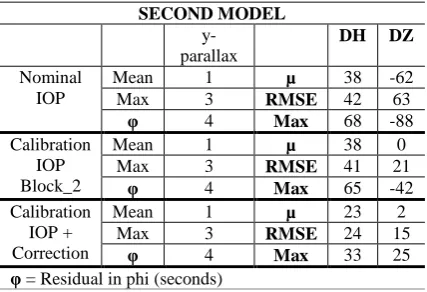Conference paper
Teks penuh
Gambar



Garis besar
Dokumen terkait
Field measurement of the backscattering IOPs are more difficult to make than absorption measurements as correction of the raw Hydroscat-6 backscattering sensor observations is
Finally, the calculated geo-referenced lake basin model and the internal and external orientation parameters of the camera are used to transform the image coordinates of the
The basic idea of the represented approach is, firstly, to compute exterior orientation parameters of “virtual” camera using reference points of known geospatial
Figure 4 displays for both lenses the cumulative distribution of re- projection errors for all (inlier) points over all images for both the benchmark calibration (simplified and
Due to the sparse growth of the individual plants height measurements with the point cloud method and the difference method was unfortunately impossible, or not
Mathematical model for multi-camera calibration using separate EOPs for each camera station (a) versus using EOPs for a reference camera and ROPs for the rest of
1) The present study concludes that Little ROK site is the preferred site for post-launch calibration due to high degree of homogeneity, which helps to derive precise
Aerosol optical depth retrieval over land surface using remote sensing employs the use of radiative transfer simulations and/or simultaneous measurements of